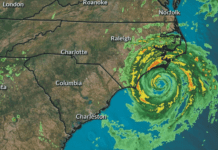A friend recently made a short delivery on a boat whose compass was fully 30 degrees deviated. No one worried about it. No one even looked at the compass because they were steering by GPS and autopilot anyway.
That story gave me the willies. I don’t want to sound like a Luddite, but I’m willing to say this: Letting our main DR instrument get out of whack is bad. It’s bad not because all our electronics are going to fail suddenly and we’ll get lost, but because in our rush to collect electronic data, we lose practice with skills that open our eyes, turn on our senses, and give us lasting pleasure and confidence.
I’ve been lost in the fog a few times. It’s detestable and scary. I wouldnt give up my handheld Magellan receiver any sooner than Charlton Heston would give up his shootin’ irons. But I’ve found buoys in the fog, too, sometimes by actually figuring out where they were most likely to be. Those finds afforded satisfaction of a quality and degree I haven’t known since LORAN came to town. I miss that satisfaction, and I don’t expect I’ll ever know it again unless I get rid of my GPS. But that wouldn’t be prudent.
The best coastwise pilot I’ve sailed with was Sally Pinchot, now gone. On one delivery we made an all-day run under power right along the coast of Maine in fog so thick we could barely see 30 yards. She piloted with speed/time/distance arithmetic, vector triangles, depth contours, current charts, and timing echoes off nearby islands. She also piloted by the smell of spruce, the sound of waves on shore, and particularly with the aid of a stack of notebooks she had kept for many years while sailing those waters. She’d call up from the nav table: “In four or five minutes we should come into a string of lobster pot floats that are yellow with green stripes. Tell me what you think of the tide when we go by.” Sure enough, the floats would show up on cue, and we’d give her the bearing of the set and an estimate of the drift, and she’d tell us to carry on, or change course a few degrees. (“Steer sou’-southwest, half by south. Make four knots through the water.”)
Almost every bit of dead-reckoning relies on the steering compass. The compass is the center, the One Truth, the connection to all the wisdom of the chart. This month’s article on compasses reminded me of the reverence I felt for the binnacle compass on my uncle’s boat when he was teaching me to steer; how the card stayed the same while the boat swung around it-and the feeling of being given the helm, the trust of the navigator, and some of the responsibility for the welfare of the boat.
When my uncle decided I could steer well enough, he left me there for the full trick-enough for me to fail and recover a dozen times, until my my eyes were bugging out.
After all the time I’ve spent steering to a compass, I have an ironclad understanding of which way Im facing on land; always a complete sense of the cardinal points (although underground parking garages can be tricky). Every day, all day, I swing around the card floating in my brain.
When the great sportscaster Red Barber died a few years ago, NPR’s Bob Edwards remembered how shocked Barber had been when Edwards told him he didn’t know what kinds of trees grew in his yard. This lack of fundamental knowledge was appalling to Barber. How could someone not know the names of the trees that grew around him?
As Barber felt about trees, I feel about direction. How can anyone, particularly a sailor, be complacent enough to neglect the law of ancient, unfailing magnetism, and the instrument that gives it order?
It wouldn’t make sense to go without GPS. But it’s like a lot of temptations: a little is great; a little more is bad. If the whiff of a spruce in the fog is to remain truly significant to us, we’re going to have to be brave and turn the tech off once in a while.
-Doug Logan




































